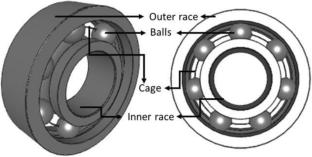Stacked Inexact Augmented Lagrangian Multiplier with Sparse and Low-Rank Matrix Decomposition: A Novel Low Sampling Vibration Signal Denoising Strategy for Enhancing Feature Quality to Predict Health State of Bearings Using Machine Learning Model
Abstract
Induction motors are essential in industrial systems but are susceptible to bearing failures, leading to unanticipated downtime and elevated maintenance expenses. Early identification of these defects is challenging, as vibration signals are sometimes obscured by industrial noise. Prior decomposition-based denoising techniques encounter difficulties with low-sampling-rate data due to their dependence on high time–frequency resolution and their sensitivity to noise and parameter adjustments. These approaches frequently struggle to discern subtle fault signs in imprecise or noisy data. This paper introduces a stacked augmented Lagrangian multiplier (ALM)-assisted sparse and low-rank matrix decomposition (SLD) method that resolves these constraints. The approach isolates sparse fault-related features from background noise without necessitating high-resolution inputs or substantial parameter tuning, hence preserving diagnostic accuracy at low sampling rates. By conducting local segment analysis, it improves the visibility of defect frequencies at different motor speeds. The integration of retrieved features with artificial neural networks (ANNs) results in enhanced classification accuracy. This research provides practical benefit by facilitating scalable, real-time condition monitoring through low-cost data collecting devices, therefore substantially decreasing operational expenses and enhancing reliability across extensive industrial fleets.


 求助内容:
求助内容: 应助结果提醒方式:
应助结果提醒方式:


